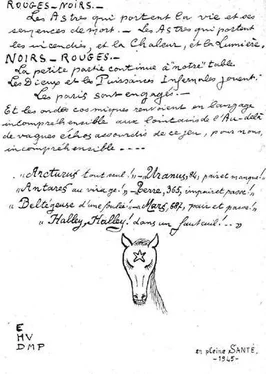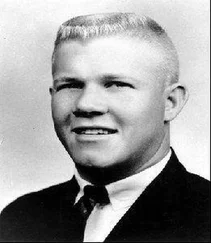In 1926, over one of these meals, Petiot suddenly turned to his friend and said, “I think I will get involved in politics.” It was such an abrupt and unexpected announcement that Nézondet doubted that he was serious. But sure enough Petiot registered as a candidate for that spring’s council election and hit the campaign trail with ferocity. He would run as a member of the Socialist Party, which in Villeneuve-sur-Yonne, as in many parts of France in the mid-1920s, was thriving. Petiot believed that this was the party of the future. The increasing power of the “have-nots,” with whom he identified, would, he thought, eventually overwhelm rivals with the strength of numbers.
Petiot had gotten to know many of these have-nots in his medical practice. He paid attention to his patients’ concerns and put many of them in his debt for “free” medical care. Now, if elected, Petiot promised to make the rich and privileged citizens pay for more social services, ranging from a new sewer system to playgrounds for the children. Many people listened. Petiot developed a reputation for lively conversation, both far-ranging and free-spirited, punctuated only by a bizarre unrestrained laughter that came at unexpected or awkward moments. It was compared to the howl of a shipwrecked man who had lost everything.
So far from hurting his chances at election, Petiot’s eccentricities sometimes proved beneficial on the campaign trail. He was a night owl who slept little and often had great difficulty winding down. He poured this restless energy into the campaign. His mind always seemed to be racing ahead to solve the next problem. In the meantime, he continued providing free and discounted medical service to patients, thereby building his practice and political base of loyal supporters, all the while keeping on, secretly, being reimbursed for his services by the state.
Petiot, no surprise, won the election; the only surprise was the margin of victory. It was a landslide. Marcel Petiot, only thirty years old, was about to be inaugurated as mayor. He would soon follow up this success by winning an election for Yonne’s conseil général , the approximate equivalent of a US congressman. When one friend congratulated him, Petiot was blunt. “That’s nothing. I am going to go very far.”
3.
PRELIMINARY FINDINGS
ALL EVENING, I HAVE RECEIVED TELEPHONE CALLS AND REPORTS. IT IS CLEAR THAT WE ARE IN THE PRESENCE OF A STRANGE AFFAIR WHOSE SIGNIFICANCE IS GOING TO INCREASE.
—Amédée Bussière, prefect of police
IT was the afternoon of March 12, 1944, that the first printed account of the sinister discovery on rue Le Sueur hit the streets. The brief mention in Paris-Midi managed to garble the few facts known at the time. According to this report, employees of the gas company, investigating a gaslike odor, entered the building and discovered “the charred remains of two people in the boiler.” No other information was provided, other than the equally false statement that several tramps had been found on the premises, and one of them started the fire.
Outside 21 rue Le Sueur, the crowd had begun to grow. The smell—described as a sickening sweet smell that permeated everything—was now worse than it had been the previous night. One First World War veteran outside the property was reminded of his experience spending several days in a shell hole with five dead bodies. “After two days,” he said to Jean-François Dominique, a young journalist with Toulouse’s La Républic du Sud-Ouest , “it smelled just like this.”
About two dozen police officers, faces pale with fear, tried in vain to usher along the crowd. Behind the barricades, while Massu showed police and legal dignitaries around the property, pointing out where they had found “a pile of skulls, tibias, humeri, broken thigh bones, and human debris of all kinds,” a team of four men continued the excruciating work of sifting out the remains from the lime pit. Massu’s assistants were horrified at the task, so the commissaire had hired gravediggers from Passy cemetery.
Petiot’s neighbors talked to the police and to one another. Some residents claimed not to know that the house at No. 21 was inhabited, or at least not regularly by “respectable people.” Others discussed the owner’s strange behavior. A nearby concierge described how Petiot would enter or depart from his courtyard, invariably on a bicycle with a cart in tow. Each time, the physician nervously glanced over his shoulder and all around him to check that no one was watching him. The concierge at No. 22, Marie Lombre, agreed, noting that the man came almost daily and usually wore a Basque beret and workman’s clothes. His cart was often filled with furniture, works of art, and items of value. But sometimes, she said, “it was impossible to tell.”
Victor Avenelle, a fifty-three-year-old professor of Romance languages who lived on the sixth floor of 23 rue Le Sueur, claimed often to hear shouts and disturbing “cries for help.” He had heard this screaming three or four times since Christmas, usually between eleven and midnight or perhaps one in the morning. The voice was always female. Another tenant in that building, Count de Saunis, said that he sometimes could not sleep for the yelling, or the odd hammerlike sounds that emanated from the house. Others claimed to hear laughter of women, strange popping noises that resembled the uncorking of champagne bottles, or even the sounds of an old horse-drawn carriage clip-clopping down rue Le Sueur about eleven thirty at night before stopping outside No. 21. The police, at this point, had no idea what to make of these statements.
Massu’s detectives powdered for fingerprints and continued to search through the town house for any evidence of the crime or its victims. In one of the buildings in the back of the courtyard, police found a second, smaller pile of lime about fifteen to twenty inches high, six feet wide, and six to nine feet long. It, too, was filled with human bones. Nearby was a cart lacking a wheel. Was this the one neighbors had seen? At various other places of the mansion, agents found workman’s clothes, soiled with lime. In the entrance was a darkly stained brown suitcase that contained a nail file, an eyelash brush, the sheath of an umbrella, and eleven pairs of women’s shoes. The dark stains on the suitcase were almost certainly blood.
In Dr. Petiot’s consulting room, police found a Czechoslovakian-made gas mask, which, they concluded, was used as protection against “the odors of the cadavers” as he transported them to the stove. A “needle for injections” was also found, as was a small bust of a woman made in wax.
Agents Petit and Renonciat discovered a black satin dress with deep décolletage and adorned with two golden swallows, designed by Silvy-Rosa at rue Estelle in Marseille. The garment was still scented with perfume. Another officer uncovered a small, round, old-fashioned woman’s hat, in brown velvet with a peacock feather, made by Suzanne Talbot, at 14 rue Royale in Paris. A woman’s nightgown with the initial “T” was also discovered in Dr. Petiot’s consulting room, along with a man’s gray dress shirt with red stripes and red embroidered initials “K.K.,” which someone had tried to remove. Two other items bearing the same initials were also found: a white shirt with dark blue stripes and a pair of undershorts.
It was another find, however, that underlined the sheer extent of the human tragedy. Concealed in a cupboard in Petiot’s basement were some twenty-two toothbrushes, twenty-two bottles of perfume, twenty-two combs and pocket combs, sixteen cases of lipstick, fifteen boxes of face powder, and thirty-six tubes of makeup, mascara, and other beauty products. There were also ten scalpels, nine fingernail files, eight hand mirrors, eight ice bags, seven pairs of eyeglasses, six powder puffs, five cigarette holders, five gas masks, four pairs of tweezers, two umbrellas, a walking cane, a penknife, a pillowcase, a lighter, and a woman’s bathing suit. Clearly there were many women among the victims, and the killer appeared to be hoarding their personal belongings. Had he also been sadistically inflicting pain or sexually abusing them before chopping them into pieces and dumping the remains into a lime pit?
Читать дальше












